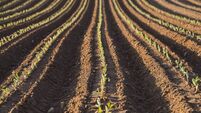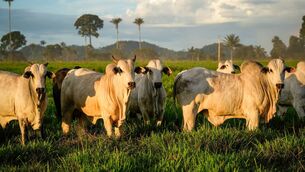Costs a big factor in crop planning

The resulting overhang on the market, especially in maize grain, is depressing feed grain markets.
Speaking at the Teagasc Crops Forum last month, James Nolan from R&H Hall could not see a grain price increase in the near future.
Planning for your cropping area in 2015 needs to be completed with these lower prices (which are still falling) in mind. Material and machinery costs to grow winter barley and winter wheat are €1,300/ha and €1,130/ha, respectively. The associated break-even costs (€135/t for wheat and €125/t for barley) for both crops are 9.6t/ha (3.9t/ac) for wheat and 9.0t/ha (3.7t/ha) for winter barley (excluding straw).
Given these high break-even yields, there is little scope for planting poor land which could drag down yield, nor for land rental costs.
Every €123/ha (€50/ac) paid for land rental equates to an additional grain yield of 1t/ha (0.4t/ac) of barley to cover the cost.
The goal should be to decrease production costs and increase average margin per ton on the farm positives.
Potential solutions to pressure on profitability in 2015 include reducing unprofitable land rental.
The positives are reduced potential losses in a low grain price year; reduced wear and tear on machinery on loss-making fields or crops; more time to better manage remaining crops; and the advantage of fewer entitlements after 2015.
The negatives are increased machinery costs and fixed costs on the remaining acreage, and higher-value entitlements after 2015.
Linking land rental costs to grain price helps, because the landowner shares the risk of grain price changes, and the financial outcome is more predictable.
The only negative may be losing out if the grain price increases.
Leaving poorer–yielding land uncropped reduces input costs and increases average yields, and the unplanted land (fallow) can be used for ecological focus area (EFA) requirements.
On the negative side, it is harder to manage fields with uncropped areas, which will have an increased weed burden.
You must know your costs of production, and for this you can use the Teagasc costs and returns planner (available on www.teagasc.ie/crops/crops_margins ) where you can use your growing costs to compare against standard figures and plan the most profitable solutions for your farm.










